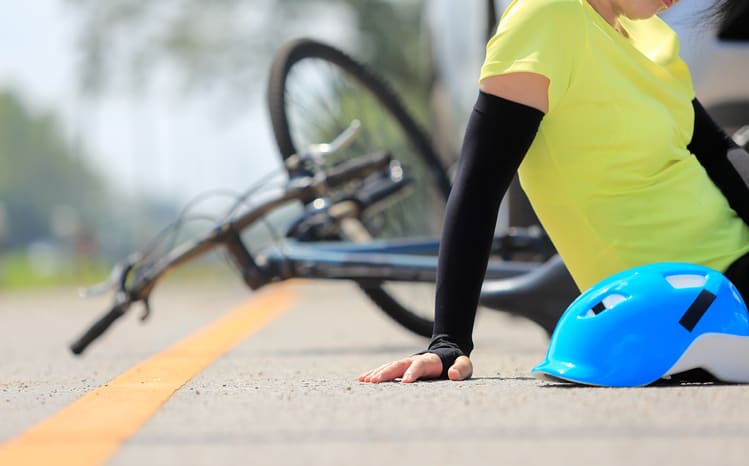

(844) - 444-4444

Bicycle-related injuries account for approximately 900 deaths, 23,000 hospital admissions, 580,000 emergency department visits and more than 1.2 million physician visits per year in the United States, according to the American Academy of Family Physicians. This results in an estimated cost of more than $8 billion annually.
Bicyclists are vulnerable to their surroundings, including other vehicles on the road. Vehicles, including passenger cars, SUVs, and trucks, are larger and heavier than bicycles and can cause massive damage to anyone who is riding a bike.
Most bicycle-related injuries occur to the upper or lower extremities, followed by the head, face, abdomen or thorax, and neck, according a 2001 article published in the American Family Physician. Superficial trauma such as abrasions, contusions, and lacerations—often called “road rash”–is seen in most accidents.
Twenty-two to 47 percent of injured bicyclists suffer head injuries, according to the American Academy of Family Physicians. This can happen during a collision with a motor vehicle. Head traumas cause more than 60 percent of all bicycle-related deaths and most long-term disabilities.
Here are some other common types of injuries suffered in bicycle collisions:
There are a many different types of bike accident situations — some bicyclists can fall from their bikes after a collision or be struck and injured by a vehicle. Bike accidents involving cars are often considered more dangerous because the force of a vehicle’s impact can be immense on a bicycle’s smaller frame.
Why do bike accidents happen? Bike accidents can happen due to a distracted driver, a driver who fails to obey traffic laws or signals, or a hazardous road or bike lane. Drivers who are intoxicated or fail to yield the right of way in traffic can also cause accidents with cyclists. Bike riders themselves can also contribute to a collision with a vehicle if they fail to follow traffic laws or rules pertaining to bicyclists.
Drivers should take caution during the summer months. NHTSA reported that bicyclist deaths are highest during the summer months between June and September. It’s also important to be extra careful when driving in urban areas where there is more traffic. In fact, according to NHTSA, nearly three out of every four bicyclist deaths occur in urban areas.
The National Highway Traffic Safety Administration (NHTSA) has provided bicycle riding safety tips that may help reduce your risk of a bike accident.
Some of these tips include:
For other helpful bicycle riding safety tips, please visit NHTSA website.
Bicycle accidents can be devastating. If you have been injured in a bike accident — whether because of a reckless driver or a dangerous speed bump — and are looking for a personal injury attorney, contact William Mattar P.C. Our bicycle accident lawyers can help you receive maximum compensation for your injuries. Schedule an initial case consultation today by completing our free online form or calling our offices at (844) 444-4444.





